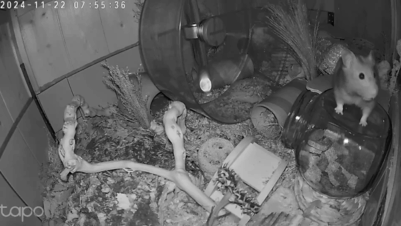
Clinical animal behaviourists (CABs) are experienced in identifying whether a species is presenting behaviour patterns due to learning, stress, trauma, their environment or a lack of their basic needs being met. CABs are not veterinarians and do not diagnose clinical conditions; however, their years of clinical experience, continual CPD and connection with veterinary behaviourists provide them with the skills to recognise behaviour presentations that are not typical to a species. These behaviour patterns can be a result of a combination of various differentials, such as genetics, breed, learning, stress, etc. But at the forefront of a CAB’s investigations is the possibility that the animal could be responding to its clinical internal environment. The success of these cases relies on the liaison between veterinarians and CABs to work collectively with one another to help rehabilitate the animals.
Quite often, these behaviour patterns don’t fit the typical behaviour pattern that suits the individual’s ethology and learning history, which means they can quickly become mislabelled or misdiagnosed as having an overall “attitude” or “breed or personality trait” when concealed clinical factors are commonly at the root of these behaviour presentations.
Commonly observed behaviour patterns
The behaviour patterns that we commonly observe when there is a fundamental underlying clinical problem are:
- Sudden onset of aggression/reactivity such as growling, air snapping or biting
- Reluctance/reactivity to touch or people/animals being in close proximity to their personal space, as well as conflict around petting and socialising, for example approaching but suddenly reacting “out of the blue”
- Reluctance to participate in or avoidance of usual day-to-day activities/routines, such as protesting on walks, avoiding social engagement or protesting against specific equipment being applied
- Excessive and intense hyperarousal or hyperactivity
- Excessive and intense mouthing
- Intense vocalisation
- Inability to settle/always on the go, and intense humping (especially around mealtimes)
- Sleeping too much for the age of the dog
- Excessive pica (ingestion of inedible items, especially stones, materials, soil/concrete), excessive licking of surfaces such as walls/floors
- Disturbed or unusual sleeping/eating/toileting patterns, such as withholding elimination or excessive elimination
- Compulsive or repetitive behaviours, such as guarding areas, items and food, pacing or intense seeking/stealing behaviours
- Self-directed aggression, eg nibbling regularly and biting/attacking themselves
- Seeking out hard/cold surfaces to rest on
- Unusual gait patterns
- Inconsistencies between “aggressive outbursts” that don’t fit a behavioural pattern
- Periods of normal behaviour then flare-ups of a sudden onset of growling/biting with high intensity
If we observe any of the above behavioural patterns regularly while working with the animal, it is usual for a CAB to contact the veterinarian who signed or agreed to their vet referral for aid on the case. A suggestion for further investigations/tests may be discussed with the vet, and practising CABs rely on a two-way discussion to allow them to enable a process of elimination to rule out anything clinical while implementing a behaviour modification plan. It is vital that medical ailments are ruled in or out as soon as possible, to help protect the welfare of not only the individual animal, but the family they live with. Working together in the investigation and monitoring process really enhances the success of the case’s rehabilitation and future longevity.
Practising clinical animal behaviourists rely on a two-way discussion to allow them to enable a process of elimination to rule out anything clinical while implementing a behaviour modification plan
Case examples
Over the past few years, the authors have noticed a trend in some behaviours that are frequently present when patients with behavioural problems are referred to them. Often, despite behaviour modification, some of these behaviours remain, and after referral back to the veterinarian for further investigation, the authors have noticed a trend in behaviours with underlying medical ailments. This is not to say the behavioural problems being treated aren’t there – they often are. However, we find once these medical ailments have been diagnosed and treated, there is a reduction in the intensity and frequency of the problem and the behaviour modification is more successful. Therefore, we feel that it is vital to demonstrate these trends to help provide a reference for referring veterinarians. These medical conditions may be an initiating factor or are exacerbating an existing problem beyond a “typical” reaction.
Medical conditions may be an initiating factor or are exacerbating an existing problem beyond a “typical” reaction
Gastrointestinal ailments and resource guarding
A commonly referred behavioural problem seen by practising CABs is resource guarding behaviour, where a dog may be growling, biting, lunging or snapping at their caregivers over locations, items, food or even people. Often these cases can be complex as there are many differentials to investigate. The authors have seen cases that presented with resource guarding, biting their caregivers when they approached while their dogs were eating. Interestingly, these cases all presented alongside other “non-typical” behaviours such as irritability and restlessness, inability to settle, excessive mouthing and licking, and ingesting and chewing inedible items, such as plaster walls, bricks or stones and even glass.
In five of the authors’ recent resource guarding cases, two tested positive for Giardia, one for coccidia and one had an inflamed pancreas and Giardia. Most of the cases also displayed signs of pain and needed pain relief after their gastrointestinal issue was treated.
Chronic musculoskeletal pain and lead reactivity or handling issues
Another commonly referred behaviour issue is lead reactivity and handling problems. Again, the authors recognise that the differential list for these behaviour problems is long; however, in the authors’ experience, underlying pain often appears to be present in these cases. Once the dog has had an analgesia trial and the vet has found the right pain relief for the individual, the presenting behaviours often reduce in intensity within a couple of days, even without behaviour modification. With a combination of behavioural support and pain relief, these problems are often successfully overcome.
Once the dog has had an analgesia trial and the vet has found the right pain relief for the individual, the presenting behaviours often reduce in intensity within a couple of days, even without behaviour modification
Recent examples from the authors’ practices include: a dog-reactive Akita who was referred for reactivity and redirected aggression to the caregiver and labelled as “dominant due to the breed”; a dog-reactive Labrador; and a Chihuahua also labelled as being “naughty” or “dominant”. When referral was made back to the vet with suggestions for further investigations, both the Akita and the Labrador received a successful analgesia trial and X-ray, and were diagnosed with chronic hip dysplasia. As a result of analgesia treatment, pain management and physiotherapy alone, their overall reactivity greatly reduced and in some contexts ceased. The Chihuahua’s case resulted in a diagnosis of luxating patellas and syringomyelia and was referred to a specialist pain clinic for further medical treatment.
Persistent phantom pregnancy and an increase in anxiety and reactivity
The occurrence of persistent phantom pregnancies in spayed bitches has been shown to possibly be under-estimated (Root et al., 2018; Davies, 2021). The authors have added this to their differential list for anxiety, which can be an underlying cause of reactivity, excessive barking and guarding behaviours in both spayed and entire bitches. For three of the authors’ cases in the past year, the CABs referred back to the vet and the bitch was treated for a phantom pregnancy in all the cases. The reactive behaviour presentations completely ceased after hormonal treatment.
Conclusion
The link between some of these behaviours and medical conditions is a growing trend commonly seen by CABs that is also discussed and recognised in peer groups. It is important that the knowledge and experience shared between the CAB and the referring veterinary surgeon is as collaborative and supportive as possible. The CAB’s ability to ascertain what is normal and what exacerbates behaviour in these contexts should not be underestimated. Providing guidance and support in these cases often opens a dialogue to further investigate and treat a potential underlying medical cause that may have been overlooked otherwise. Taking this collaborative approach to cases and sharing knowledge will better support the individual animal’s rehabilitation and help improve companion animal welfare as a whole.








